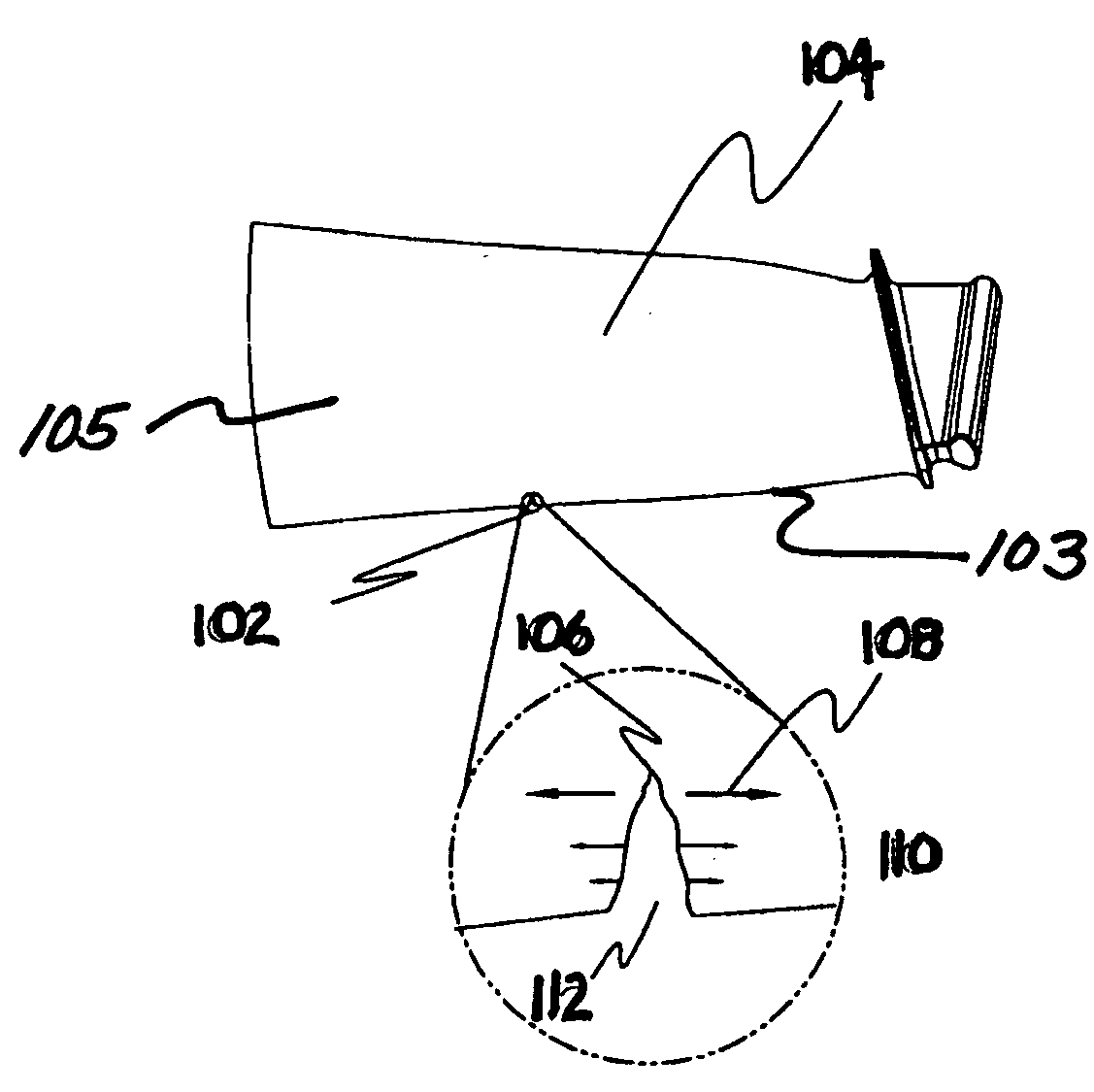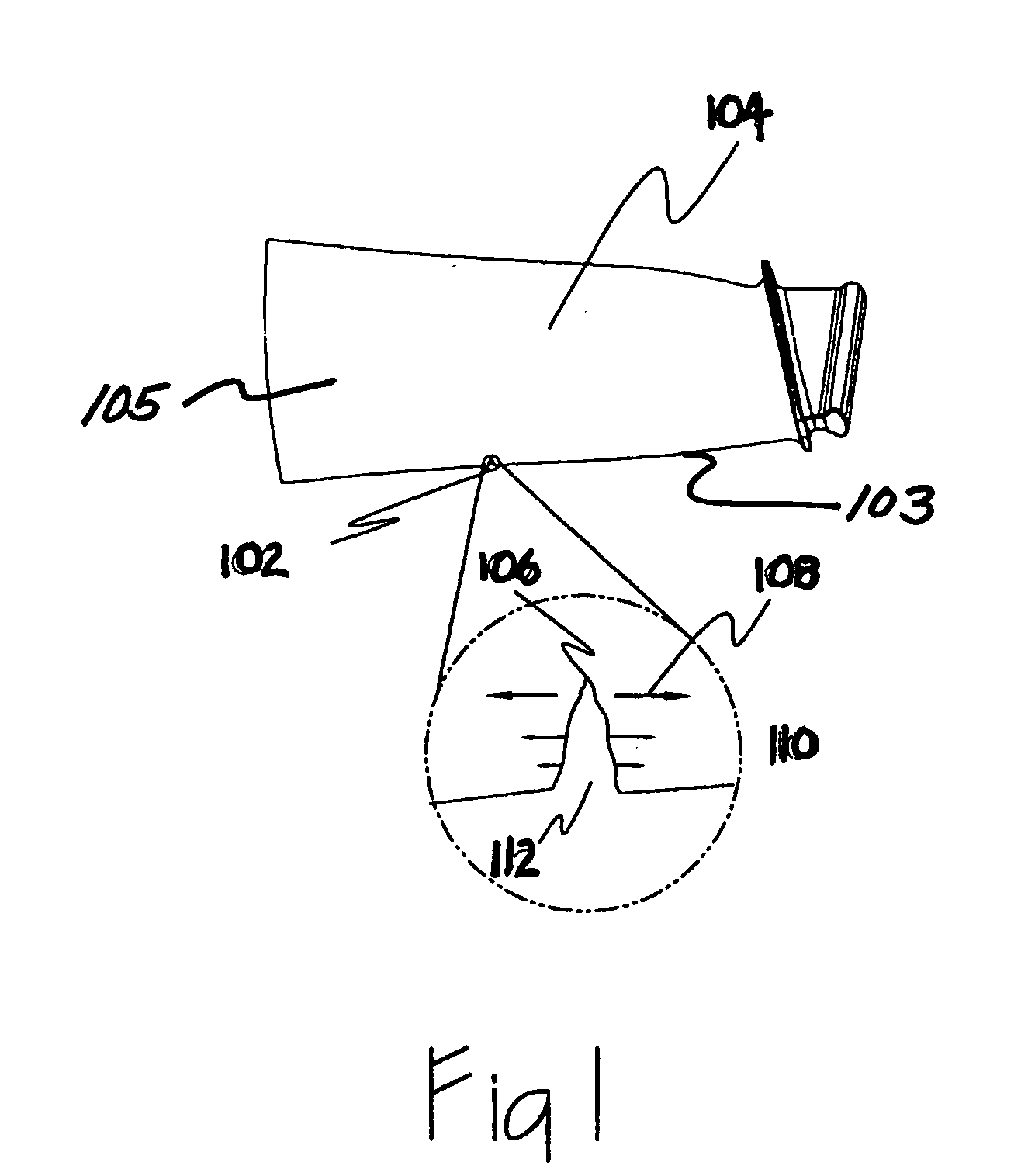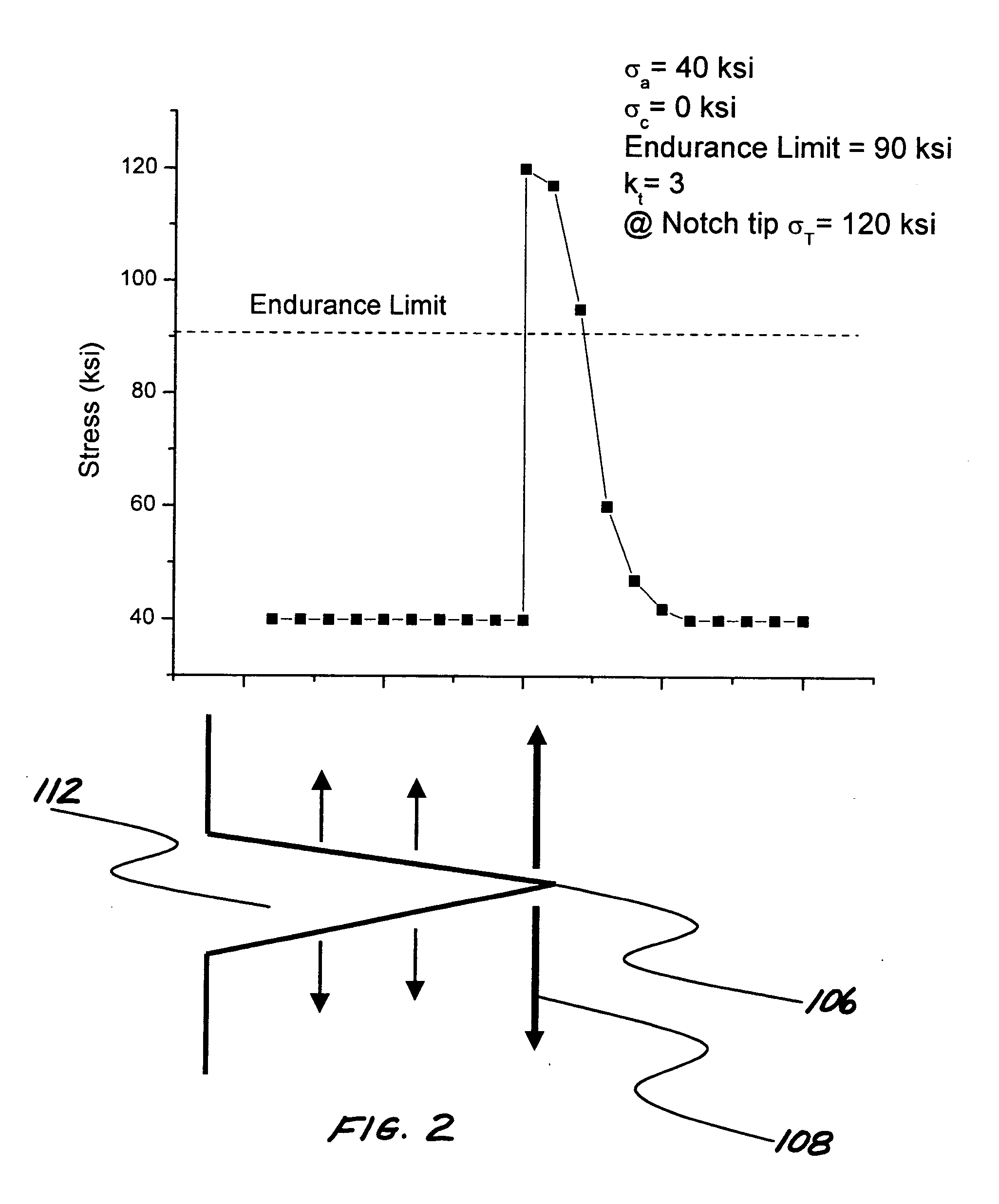Method of mitigating the effects of damage in an article
a technology of damage and article, applied in the field of treating articles, can solve the problems that fatigue cracks cannot initiate nor grow to failure, and achieve the effects of reducing the cost of implementation, and reducing the risk of damage to metals
- Summary
- Abstract
- Description
- Claims
- Application Information
AI Technical Summary
Benefits of technology
Problems solved by technology
Method used
Image
Examples
example 1
No Mitigation of Applied Stresses
[0027]Referring to FIG. 1, an article 104, such as a titanium alloy compressor blade, has a V-shaped FOD notch-like feature 112. The notch-like feature 112 has a stress intensity factor of kt=3. The endurance limit for the article is 90 ksi. The location of the notch-like feature 112, prior to damage, is subject to an applied stress of 40 ksi. After damage, the area 102 at the base of the FOD notch-like feature 112 is subject to a total stress (σT) equal to the applied stress (σa) multiplied by the stress intensity factor (kt). Therefore, after damage, the total stress (σT) 108 acting on the notch tip 106 is 120 ksi. Because the stress 108 acting on the notch tip 106 exceeds the endurance limit for the material (90 ksi), the article 104 would have a significantly reduced fatigue life and ultimately fail as a result of fatigue cracks nucleating out of the notch-like feature 112. The magnitude of stresses acting along the notch-like feature 112 is grap...
example 2
Complete Mitigation of Applied Stresses
[0035]The notch-like feature 112 discussed in Example 1 is now treated according to the method of the present invention and a residual compressive stress distribution 116 is introduced around the notch tip 106. The magnitude of the compressive residual stress distribution 116 is −50 ksi. The total stress 114, σT, acting on the notch tip 106 during service is:
σT=(σz+σc)×kt
where σa is the maximum applied stress (40 ksi), σc is the magnitude of the residual compressive stress distribution 116 at the notch tip 106 (−50 ksi), and kt=3 is the stress intensity factor for the notch configuration. Therefore, after treatment to induce the residual compressive stress, the total stress 114 acting on the notch tip 106 during service of the metallic article is −30 ksi. Thus the notch-like feature 112 remains in compression even under the maximum tensile applied loading conditions. Because the stress 114 acting on the notch tip 106 is less than the endurance...
example 3
Partial Mitigation of Applied Stresses
[0039]The notch-like feature 112 discussed in Example 1 is now treated according to the method of the present invention and a residual compressive distribution is introduced around the notch tip 106. The induced compressive residual stress is −30 ksi. The total stress 108, σT, acting on the notch tip 106 during service is:
σT(σa+σc)×kt
where σa is the maximum applied stress (40 ksi), σc is the magnitude of the residual compressive stress distribution (−30 ksi), and kt=3 is the stress intensity factor for the notch-like feature 112 configuration. Therefore, the total stress 108 acting on the notch tip 106 after treatment is tensile, +30 ksi. As this value is much less than the endurance limit of the material (90 ksi) the risk of fatigue cracks nucleating from the notch-like feature 112 is effectively mitigated. Example 3 is graphically illustrated in FIG. 5.
[0040]The surface treatment method of the present invention can be used to treat a variety ...
PUM
| Property | Measurement | Unit |
|---|---|---|
| stress concentration | aaaaa | aaaaa |
| compressive residual stress | aaaaa | aaaaa |
| compressive residual stress distribution | aaaaa | aaaaa |
Abstract
Description
Claims
Application Information
 Login to View More
Login to View More - R&D
- Intellectual Property
- Life Sciences
- Materials
- Tech Scout
- Unparalleled Data Quality
- Higher Quality Content
- 60% Fewer Hallucinations
Browse by: Latest US Patents, China's latest patents, Technical Efficacy Thesaurus, Application Domain, Technology Topic, Popular Technical Reports.
© 2025 PatSnap. All rights reserved.Legal|Privacy policy|Modern Slavery Act Transparency Statement|Sitemap|About US| Contact US: help@patsnap.com



